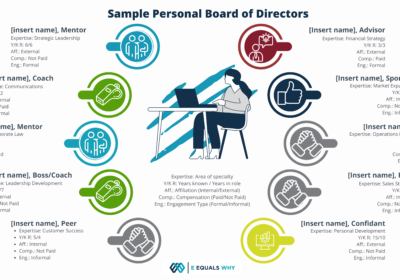As we observe Mental Health Awareness Month in May, it is an excellent reminder for leaders to recognize their crucial role in caring for their teams and helping them avoid burnout. Employee burnout is a real concern, and according to the World Health Organization is a syndrome that can be characterized by 3 dimensions:
- exhaustion or energy depletion,
- decreased engagement at work, feelings of negativism or cynicism related to one’s job, and
- reduced productivity or efficacy.
To ensure delivery of results for the organization, leaders must take responsibility for setting up their teams for success.
Understanding the Reasons for Burnout
When individuals are experiencing burnout, it shows up in various forms, including a lack of clarity about goals and purpose, indecisiveness, absence of accountability, job insecurity, stagnant growth, lack of recognition, inadequate communication, overwhelming workload, feelings of exclusion, and unacknowledged contributions. Here are some thoughts/feelings that might be explicitly stated or are running through their heads:
- I have no idea what we are trying to accomplish and why.
- We have no strategy!
- No one in this company can make a decision!
- No one is taking responsibility!
- Is my job at risk?
- Why should I bother?
- No one is listening to me.
- I haven’t spoken to my manager in weeks.
- I have too much work to do, I don’t know which to do first.
- I feel left out.
- I work my butt off and someone else takes the credit. A simple thank you would be nice.
Great leaders listen with the intent to empathize, understand, and eventually address concerns. These thoughts/feelings can be distilled into five fundamental needs every employee has and that require intentional focus by managers: Purpose, Security, Inclusion, Growth, and Accountability.
- DIRECTION/PURPOSE: They want to know where they are going, and maybe more importantly why. They want to be motivated and excited. They want purpose and want to know that the work they’re doing has a bigger impact beyond their paycheck.
- SECURITY: They want to know their paycheck is secure and that they will be able to provide for their family. They need to have the space to explore and try new things, as well as possibly fail without repercussion. They want to know that you, as their leader, has their back.
- INCLUSION: They want to feel as if they are part of the team and that differences are appreciated. They want to be heard, acknowledged, and respected.
- GROWTH: They want to learn continuously, build new skills, and they want to expand their scope of responsibilities. They want promotions and advancement, but they are also looking for the little things that provide validation, ensuring they are on the right track.
- ACCOUNTABILITY: They want everyone to be held accountable for delivering results. They want to know everyone is being fully transparent, and not holding anything back.
Reducing Burnout: 5 Tips for Leaders
Creating a supportive work environment that promotes growth and well-being necessitates the implementation of effective leadership development strategies. Here are five tips for leaders to avoid burnout amongst their team members:
- Clearly Express a Strong Vision and Purpose: Leaders should articulate a compelling vision and emphasize its significance. By providing a clear sense of purpose and direction, team members can understand the value of their work and feel motivated to contribute towards a shared goal.
- Engage People According to Their Individual Needs: Effective leaders recognize the uniqueness of each individual and actively listen to them, fostering open dialogue without ego. Regular one-on-one meetings and consistent communication help build rapport and provide opportunities to understand team members' true needs and aspirations.
- Focus on Executing to Deliver Results: While listening and engaging are crucial, leaders must also deliver tangible results. This involves defining roles and responsibilities, setting clear expectations, making prompt decisions, removing obstacles, and prioritizing tasks. Creating an environment of success satisfies an employees' desire for achievement and helps prevent burnout.
- Connect with the Hearts of Your People: Leaders must go beyond structure to cultivate emotional connections with their team members. An E3 Leader stands out by leading with vulnerability and connecting on a personal and emotional level. By utilizing the ten E3 Emotional Qualities, leaders can inspire and empower their team members, creating a high-performing culture that supports mental health.
- Encourage Time Off for Everyone on the Team (including you): In our fast-paced world, vacations may appear as luxuries we can't afford. However, it's crucial to recognize their immense value for mental health and well-being. By prioritizing time off, we combat burnout, recharge our energy, gain perspective, enhance creativity, and strengthen relationships. Leaders should lead by example and encourage their team members to take time off for their overall well-being.
Your Next Steps
During Mental Health Awareness Month, I challenge all leaders to prioritize the well-being of their teams. By connecting with team members, understanding their needs, coaching them to take ownership, and fostering an environment of purpose, security, inclusion, growth, and accountability. , we can support their mental health, prevent burnout, and cultivate a thriving workplace. Remember, effective leadership goes beyond achieving results; it involves empowering and connecting with the hearts of your people. Let's lead with purpose and create environments where everyone can flourish.



